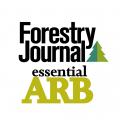
Forestry Journal editor John McNee replies to a letter from figures across the industry. The letter - which follows - was sent in response to a recent advert in the publication.
LETTER
WE were surprised and disappointed to see Forestry Journal’s print subscription offer in the July and August issues, offering a Hoggs of Fife fleece with each subscription, targeted exclusively at the men working in forestry.
As Forestry Journal itself has highlighted many times with excellent articles, there are more and more women working in a variety of roles in forestry, bringing fresh talent and much-needed diversity to the sector. With the long series of stories about women in forestry, it is even more puzzling – if not outright maddening – that your latest subscription campaign would be so narrowly focused on men, especially when Hoggs of Fife has a very good range of products for women too.
It is confusing that on one side you are trying to showcase the career options and role models that our colleagues embody, while on the other still projecting the idea of the forestry sector as a boys’ club. Occasions like this offer make it feel like the articles about all the amazing women in the sector are a box-ticking exercise rather than an acknowledgement of how far the sector has come... and how far it still needs to go.
Forestry Journal is a very good publication and an important one to keep everyone in the sector up to date with developments, news, and issues. The features you publish are very insightful and always provide prompt, interesting discussions about the present and the future of forestry.
READ MORE: Voices of Forestry: FLS apprentice and ALBAS winner Rachel Orchard on the industry
We are sure this was a non-malicious oversight from Forestry Journal, which doesn’t do justice to the publication itself, the forestry sector, or the deep and wide-reaching change it has undergone. We want to see Forestry Journal embrace the diversity and inclusivity that we create and see on the ground every day in all its parts, whether life story articles or offers. We want to see our place in the sector recognised and celebrated – on the same level as men’s – even with something as simple and small as a subscription offer.
Or, alternatively, if you believe women in forestry are too small a group to make a difference to your income, you could consider gifting free subscriptions to all the women in the sector who are interested in it.
We look forward to your response and hope to see positive change moving forward.
Louise Alexander (Galbraith), Margaret Allan (Alba Trees), Will Anderson (Seafield and Strathspey Estates), Fiona Angier (Confor), April Armstrong (Confor), Caroline Ayre (Confor), Leona Baillie (SAC Consulting), Dr Elizabeth Barron-Majerik (Forestry Skills Forum), Karen Batten (Fountains Forestry), Jane Begg, Maria Bellissimo (Confor), Dr Christine Cahalan (Bangor University), Amanda Calvert (Grown in Britain), Ben Clinch (Moray Estates), Jemima Cooper (ICF), Roger Coppock MBE (Future Trees), Ellinor Dobie (Abbey Timber), Angela Douglas, Orla Dowds Roddy, Caitlin Erskine (Seafield and Strathspey Estates), Olivia FitzGerald (Tilhill), Anthony Geddes (Confor), Dr Eleanor Harris (Galbraith), Andrew Heald (forestry consultant), Eliza Hibbins-Cline (Confor), Richard Hunter (Confor), Jenny Knight (BIFoR, University of Birmingham), Hamish Macleod (BSW Group), Jean Nairn (Woodlands Breathing), Martyn Neve (Even Forestry), Catherine Pearson (Natural Resources Wales), Marcus Potter (Lantra), Helen Richardson (Forestart), Dave Richardson (Forestart), Dan Ridley-Ellis (Edinburgh Napier University), Louise Simpson (ICF), Alice Snowden (Cheviot Trees and Future Trees Trust), Georgina Thomas (Tilhill)
EDITOR’S RESPONSE
Firstly, thank you for your complimentary words on our editorial content. Forestry Journal actively endeavours to feature and promote women in forestry and arboriculture wherever possible, whether in specific news, profiles and interviews, our regular Women in Arb feature in essentialARB, or by inviting women from across the sector to share their views in our Voices of Forestry series.
However, having the best of intentions does not make any of us invulnerable to blind spots (or “non-malicious oversights” as you correctly describe it). Without your correspondence, I doubt it would have occurred to me (or our all-female subscriptions and marketing team) that our recent subscription offer was problematic.
While the garment in question is effectively unisex and can be worn by anyone, we concede the way in which it was presented, with a list of men’s sizes and a picture of it being worn by a man, inadvertently reinforced a narrative that our offer (and, by extension, the forestry industry) was strictly for men.
Nothing could be further from our own beliefs and the last thing we would wish to do is alienate a vital and growing demographic within our audience. Going forward, I can assure you we will be more conscious of balance in our subscription offers, ensuring they appeal to all.
Forestry Journal is an open and independent platform for the forestry industry. While we value constructive criticism, the best way to help shape our content and make sure it is representative of the workforce as a whole is to get involved. With that in mind, I’d encourage all signatories to reach out to us about contributing, either by contacting me directly or by visiting our stand at the APF. We hope to see you there!
John McNee




Comments: Our rules
We want our comments to be a lively and valuable part of our community - a place where readers can debate and engage with the most important local issues. The ability to comment on our stories is a privilege, not a right, however, and that privilege may be withdrawn if it is abused or misused.
Please report any comments that break our rules.
Read the rules here